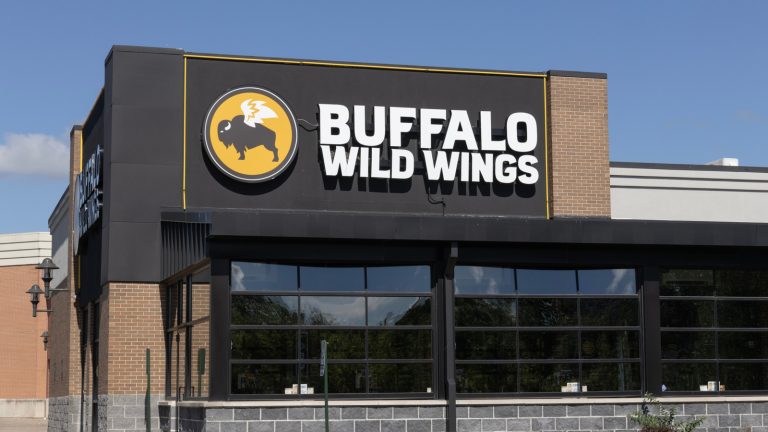Even those of us who are keen home cooks and love to make everything from scratch still rely on frozen food from time to time. It is the ultimate in convenience, whether you store frozen fruit to always have a smoothie available or frozen fries for a quick midweek meal.
Not needing to worry about the freshness and chance of spoiling frozen food is one of the big advantages, but that doesn’t mean that you shouldn’t still be choosy when shopping in the freezer aisle. There are a few signs you can spot from the outside that the food inside may not be as perfect as you would hope. From damaged packaging to clumpy veggies, looking out for these signs before you buy can save you a lot of hassle at dinner time.
If you are planning on stocking up your freezer soon, join us as we look at 10 red flags that you should look out for when buying frozen food. Armed with this knowledge, you can rest assured that you know how to pick out the best quality items the next time you head to the freezer aisle.
Damaged packaging
Frozen food can often be associated with a lack of time, but taking a few extra seconds to choose carefully can reduce the chances of buying a product that is of inferior quality. Broken or damaged packaging could be a sign that the food inside is less than perfect and may be worth avoiding.
Damage to the outer packaging can mean that microbes and dirt could have infiltrated the product, meaning the food could be spoiled. Less dangerous could be if moisture got inside and affected the food, but the produce would still be below par compared to a package that is sealed. It is easy to spot if an external cardboard box looks a little worse for wear, but it is worth paying close attention to more subtle damage, too.
Food in plastic tubs, such as ice cream, has a plastic seal that keeps everything airtight, and damage to that can be less obvious. Be sure to check that the entire seal is intact before purchasing, as even a little crack could have compromised the contents. Inner packaging that cannot be seen before purchase should also be intact, so your examination of the produce should continue even once you arrive home. If you discover afterward that the packaging of your frozen food has been damaged, return it to the store and exchange it for another. It’s not worth the risk that the contents could be spoiled.
Ice crystals
You may assume that ice crystals on frozen food are perfectly normal — it has been in the freezer, after all. An excessive amount of frost on your produce, however, is not the norm and could be a sign that the food has not been stored properly.
Once, a common reason for ice crystals is that water appears on the surface of the food before freezing. In order for the water to appear as liquid, the temperature of the food must have risen above 32 degrees Fahrenheit. The issue is that you have no idea how warm the food became or how long it stayed at that temperature. According to the USDA, food is safe to refreeze if it has stayed refrigerated, which is generally below 40 degrees Fahrenheit. There are many reasons that frozen foods in the grocery freezer aisle may have temporarily been warmed, including power cuts, but as a customer, it is impossible to know the details.
If the food inside is meat or fish, you shouldn’t take a risk if you can see a significant build-up of ice. Even with other foods, the texture could be compromised by temperature fluctuations, so it may be best to forgo it this time.
Past its expiration date
It’s easy to assume that because food is frozen, its expiration date doesn’t matter, but that’s not quite true. While frozen food does last much longer than the fresh equivalent, there is still a point that it will be beyond its best, and it is worth looking out for this when you purchase.
The good news is that the USDA says that as long as food is kept below 32 degrees Fahrenheit, it will be safe to eat no matter how long has passed. This doesn’t mean, however, that the quality will be maintained, and when you are buying the produce, you want to be sure it will taste great for as long as possible.
The frozen food will have a best-before date or expiration date on the packaging, and you should check this in the same way you do fresh food. If you know you are going to use up your frozen burgers at your weekend barbecue, it may not be such an issue. For backup food, though, that could be in the freezer for months, make sure you choose a pack that has plenty of time to spare. If not, you need to wonder how long it has been in that freezer aisle and what the consequences are for the food inside. Even if it doesn’t make you sick, you don’t want to be spending good money on food that is nearly past its best.
Bloated packaging
If you’ve ever picked up a pack of fresh chicken breasts and then put them straight back down because the packaging felt ready to burst, you will understand that there is something about that situation that just doesn’t feel right. Surprisingly, it also applies to the freezer aisle, and if the food packaging feels bloated, it’s best to skip and choose another option.
In most cases, the reason for bloated packaging is because of microorganisms. As they grow on the food, they produce carbon dioxide, and over time, this will increase the pressure inside the packaging. When the food is frozen, bacteria shouldn’t be able to multiply, so the bloating is a sign that the frozen food has potentially been warmed up. This means the food could be unsafe to eat, or at the very least, will not be the quality you would hope for. Though bloated packaging doesn’t mean this is definitely the case, it is best to choose another pack where possible.
Strange smell
We all know the common-sense rule of “if it smells funky, throw it out,” and apply it to fresh foods regularly. How often do we do the same with frozen food, though? Often, frozen food feels like it can’t go off and doesn’t need the same caution as fresh, but if you don’t know exactly how it has been stored, there is always a chance the food could be spoiled.
As a rule, frozen food doesn’t have a strong smell the way a fresh piece of salmon or wedge of cheese does. This means that if you can detect a strong odor coming from a frozen package, something isn’t right. A nasty smell suggests bacterial growth, which will not be good news for anyone who eats it. Bacteria shouldn’t multiply on properly frozen food, so a rancid smell either means the food was starting to go bad before freezing or there have been temperature fluctuations since.
While it may be tempting to convince yourself that cooking the food will solve the problem, it is not worth the risk, especially if there is meat involved. If you have already purchased the food, return it to the store once you notice the smell, and choose an option that won’t make your stomach turn.
Soggy box
It is easy to assume that the cardboard box that frozen food comes in is not related to the quality of the contents, but in some cases, it can be an accurate indicator that there may be quality issues. If the box feels a bit limp and soggy in the freezer compartment, put it back and choose another, as the wet box may tell a story of the food’s journey so far.
A soggy box suggests that liquid water has been present in the package — something that shouldn’t happen at such low temperatures. Either water has got in from outside, or the food inside has defrosted and frozen again, which can be dangerous depending on what temperature it reaches. If the cooling methods of the transport were less than ideal, your food could have been on a temperature rollercoaster before it arrived at the store — and you have no way of knowing if that is the case. Rather than assuming the contents inside the box will be fine, take a less sturdy outer box as a red flag that something suspicious has happened and choose another item instead.
Unusual texture
Sometimes, you won’t be able to spot that there is something suspicious about your frozen goods until you take them home and cook them, so it is important to be vigilant at every stage of the selection process. While it is frustrating to think that you should throw a meal in the bin when you are planning to serve it that evening, it is better to be cautious than to risk making your family sick.
If you take the food out of the packaging and the texture seems a bit off, it could be a sign that something isn’t right. Although it can be more difficult to spot dodgy textures in frozen foods than in fresh, the food should still look firm. If the texture is obviously mushy, there is a chance that it has not been consistently kept at a safe temperature.
The USDA labels the “Danger Zone” as between 40 and 140 degrees Fahrenheit, and if your frozen food has made it into that temperature range at some point without your knowledge, it can be incredibly dangerous. Similarly, if food seems overly rubbery or dry, the quality may have dropped significantly. If you have recently bought the food, you can try taking it back to the store. Otherwise, throw it in the bin to reduce the chances of anyone becoming ill from poorly stored food.
Unreadable label
One subtle sign of a problem with frozen packaging that you may not think much of is the clarity of the label. While this may seem like a superficial issue, if the writing on the outside is faded or smudged, it can actually be a sign of something wrong with the contents.
The most likely reason that a label would be hard to read is due to the presence of water on the outside of the packaging. This would suggest that the food has been improperly stored on its way to the freezer aisle. A consistent cold temperature should keep packaging moisture-free, meaning the labels should be easy to read. If you are struggling to make sense of the label, there is a chance that the contents could be compromised.
Another issue with a faded label is your inability to find out key information about the contents. Labels for frozen food provide instructions on how to cook it, as well as nutritional information and an expiry date, so if some of that information is obscured, you will be left guessing. Even if the contents are totally fine, you may be better off choosing an alternative package just to be sure.
Discoloration
If you look at frozen produce and wonder why it looks a different color to the fresh version — the truth is it shouldn’t. Frozen produce that is discolored could be a sign of poor quality food, suggesting it hasn’t been stored optimally.
While food discoloration can be a common and harmless occurrence in fresh foods — brown bananas are perfectly safe to eat — food that is stored at sub-zero temperature shouldn’t be capable of doing the same thing. The dreaded “freezer burn” can discolor frozen food, making the texture unappetizing and potentially dulling the flavor too. Meat turning grayish is not a normal part of the freezing process, and if you spot this in the freezer aisle, opt for something else.
Once you have purchased meat, keep it safe from freezer burn and discoloration by wrapping it tightly to protect it from exposure to moisture and air. Double wrapping is a good tactic if you want to preserve color, texture, and flavor.
Food is stuck together
If you’ve ever opened a bag of frozen food and found that half of the contents are stuck together in one large clump, you will know how frustrating it can be. As annoying as it is, and it can affect cooking time if you can’t separate them, it can actually be a sign of temperature fluctuation.
For the items to stick together, the produce must have warmed up enough to allow the ice to turn into liquid water before refreezing and causing clumping. If they were only warmed slightly about the freezing point, most food would likely be okay, but as a consumer, you have no way of knowing what temperature they have been kept at and for how long.
This most commonly occurs in frozen fruit and veggies, as well as frozen french fries, and in these cases, the chances of becoming unwell are fairly slim. The texture, however, could be affected by changing temperatures, so if you can avoid this situation, you will get better quality food. Fortunately, for many of these types of food, you can feel it through the packaging, meaning you can confidently choose a pack where all of the items are still loose, as you would expect.





